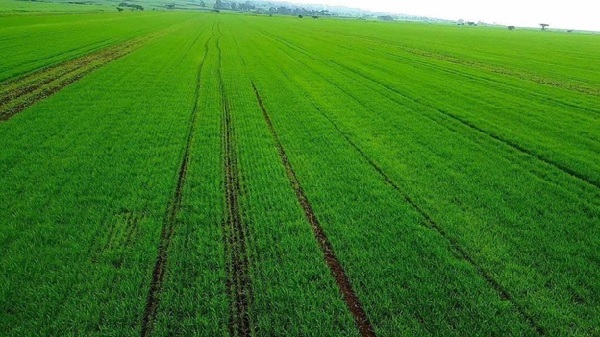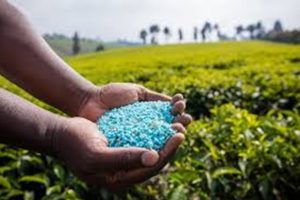
BY TEWODROS KASSA
Different sources indicate that wheat is among the leading food ingredient in today’s world. The supply of wheat would play a fundamental role in the global market and to control inflation. The rise of cost in living is directly related to the lack of enough supply of wheat which is the major input for bread production. Currently, demand of the growing world population for bread is growing steadily. Therefore, expanding wheat production and fulfilling the demand is expected from the wheat producing countries.
According to the Food and Agricultural Organization (FAO) report, Russia is the largest wheat exporter in the world followed by Canada and the United States. Three countries export more than 20 million tons of wheat: Russia, Canada and the United States. Russia accounts for nearly 24 percent of the total of the top 20 largest wheat exporters.
Recently, Ethiopia has embarked upon producing and delivering sufficient wheat to the global market through undertaking massive summer season low-land irrigation and rainy season wheat production. Ministry of Finance State Minister Semerta Sewasew stated that currently Ethiopia is producing wheat on 650,000 hectares of land and achieving better results in production of heat-tolerant seeds.
Accordingly, climate resilient tech support from African Development Bank (AfDB) through Technologies for African Agricultural Transformation (TAAT) Program is enabling Ethiopia to transform its productivity in the agriculture sector particularly in the lowland wheat production area. The TAAT Program has enabled the nation to increase productivity in heat-tolerant seeds farming in low land areas, she said. The TAAT wheat Compact began to work with the Ethiopian government and seed companies to bulk up seeds of five heat-tolerant varieties released in Ethiopia under the African Development Bank-funded SARD-SC project.
By the end of 2019, the compact had established 20,000 hectares of irrigated wheat, 10 percent of the target, in the low lands of Ethiopia, produced by some 28,000 small holder farmers. The farmers used an existing irrigation scheme used for cotton and other crops that has now been adapted to wheat as a “winter season” crop.
Through the deployment of excellent heat-tolerant varieties by a strong local team of wheat seed system specialists, agronomists, and breeders, and a strong commitment of government to provide seeds and fertilizer to farmers, the TAAT Wheat Compact was able to record rapid progress in Ethiopia.
On her part, Planning and Development Minister, Fitsum Assefa (PhD) indicated that the Ethiopian government has been investing in agriculture to increase productivity in agro processing factories and industrial parks. The implementation of a comprehensive home-grown economic reform helped the nation to bring back the economy on track.
In this regard, she said within the national wheat program, it has been producing wheat in lowland areas which used to be ideal and traditionally waits for the rainy season. Thus, the national wheat program helped the economy to be resilience. “Using irrigated water, the nation started from zero, now we are talking about 2.5 million tons of wheat”, she underscored.
Though the conflict in the northern part of the country might have its own toll on the economy, she noted that the fact that the nation has been implementing this comprehensive reform helped to stay on track.
Noting that global shocks might also have their stake on the rising of inflation as well as impacts the agriculture sector which is the backbone of the economy, the Minister highlighted that the inflation problem in Ethiopia was not only a short time phenomenon adding that it has been there for a long time due to low productivity and competitiveness.
Moreover, the government has been trying to tackle through implementing reforms and ten-year development plan which envisions increasing productivity and competitiveness of the whole economy. Besides setting out proper mitigation, the nation is pushing towards producing fertilizer, which remained to be the major challenge due to global shocks, within the country as it has all the inputs, as to her.
Thus, the African continent needs to look into and unlock its own potential so as to be food self-sufficient, so stressed Ethiopian Minister of Planning and Development. Africans are expected to implement mitigation and adaptation works to be resilient to climate shocks.
“For us, Africa as well as Ethiopia, the global shocks that are happening such as COVID-19, Russia-Ukraine conflict, and other shocks related to climate change have been a wakeup call.” Emphasizing that the impact of this global shocks came with the disruption of global supply chains, she stressed that the implementation of a comprehensive homegrown economic reform helped the nation to bring back the economy on track, she said.
She said, “When we crafted our development plan, we have not assumed such global and domestic shocks. But the good point here is we have been implementing a comprehensive homegrown economic reform to bring back the economy to height growth trajectory and build a resilient economy.”
More importantly, Ethiopia is on the right track to export wheat to the global market and undertaking various measures to commence the export very soon. Currently, the nation is pushing towards producing fertilizer, which remained to be the major challenge due to global shocks, within the country as it has all the inputs, she noted. Accordingly, undertaking various agricultural transformation measures would enable the country to export wheat in the next year to other African countries.
In this regard, Bale zone is among the potential wheat cluster model, leading bumper wheat producing area, and plays a significant role in the country’s agricultural productivity. Bale Zone Agricultural Office Head Aliy Mohamed told the Ethiopian Press Agency (EPA) that the zone has finalized its preparations to fulfill the country’s wheat import substitutions and realize the vision of wheat exporting initiative.
Thus, more attention has been given to large-scale wheat production through cluster, irrigation, and rain-season farming, he added. Bale zone cultivated 154,000 hectares of land in the Belg season with wheat and planned to cultivate 181,000 hectares of land with wheat in the current rainy season expecting 7 million and 9 million quintals of wheat harvest respectively, he said.
Bale’s agro-ecology enables growing and producing wheat, sorghum, teff, linseeds, coffee, and cash crops, among others. Moreover, following the government’s direction to transform the traditional agricultural system and modernize agriculture, Bale zone has been endeavoring to utilize latest agricultural technologies and expand the wheat cluster harvesting strategy.
The zone gives priority to address selected seed, fertilizer, and other agricultural inputs distribution to the farmers on-time, he said. In addition, private agricultural investors are also showing a great interest to join the agricultural investments in Bale zone pending its vast potentials. Accordingly, more than 280 modern tractors were distributed to the farmers and helping facilitate cultivating wheat in cluster.
The Ethiopian Herald August 9/2022





